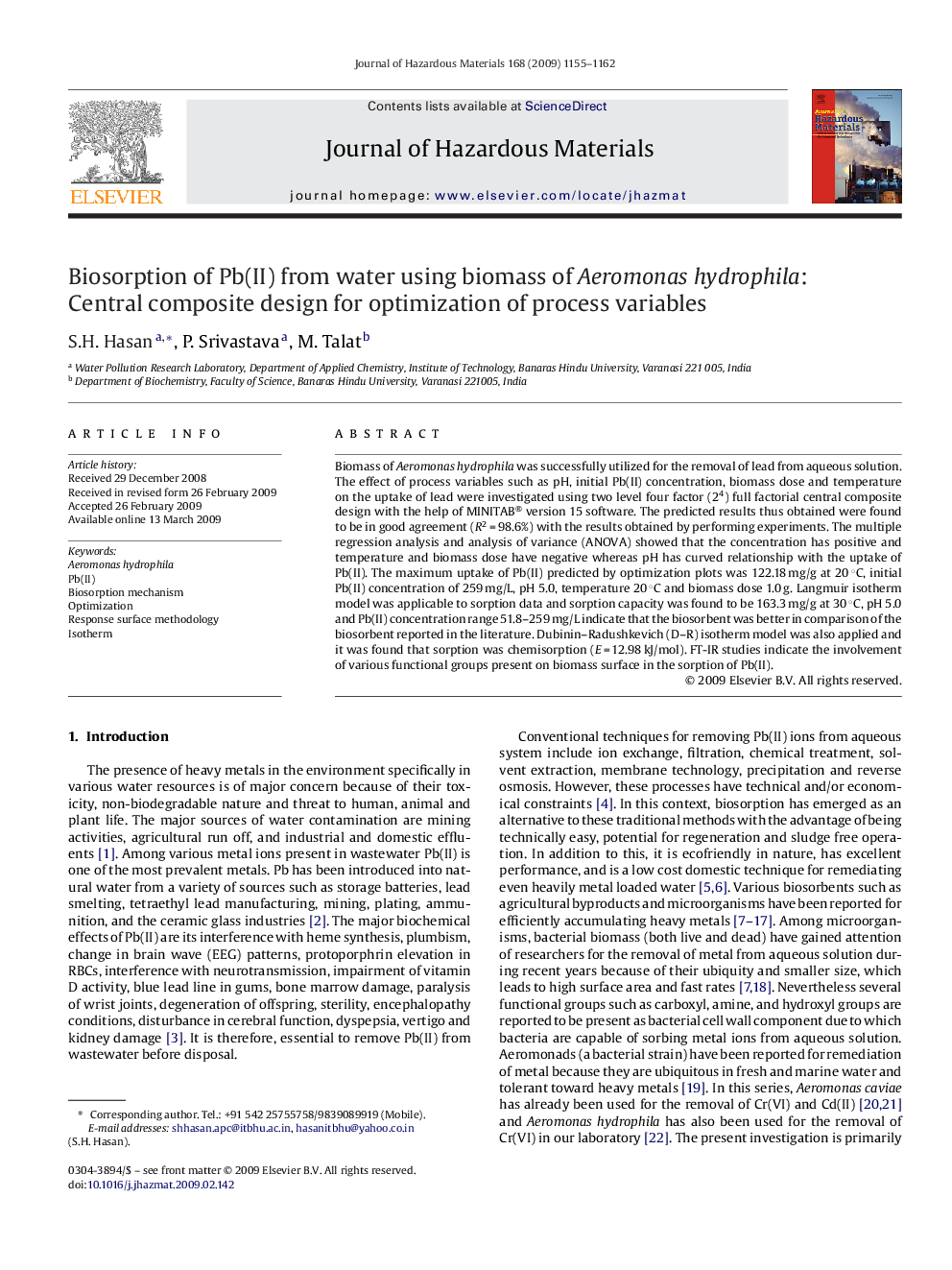| کد مقاله | کد نشریه | سال انتشار | مقاله انگلیسی | نسخه تمام متن |
|---|---|---|---|---|
| 581725 | 1453160 | 2009 | 8 صفحه PDF | دانلود رایگان |
عنوان انگلیسی مقاله ISI
Biosorption of Pb(II) from water using biomass of Aeromonas hydrophila: Central composite design for optimization of process variables
دانلود مقاله + سفارش ترجمه
دانلود مقاله ISI انگلیسی
رایگان برای ایرانیان
کلمات کلیدی
موضوعات مرتبط
مهندسی و علوم پایه
مهندسی شیمی
بهداشت و امنیت شیمی
پیش نمایش صفحه اول مقاله

چکیده انگلیسی
Biomass of Aeromonas hydrophila was successfully utilized for the removal of lead from aqueous solution. The effect of process variables such as pH, initial Pb(II) concentration, biomass dose and temperature on the uptake of lead were investigated using two level four factor (24) full factorial central composite design with the help of MINITAB® version 15 software. The predicted results thus obtained were found to be in good agreement (R2 = 98.6%) with the results obtained by performing experiments. The multiple regression analysis and analysis of variance (ANOVA) showed that the concentration has positive and temperature and biomass dose have negative whereas pH has curved relationship with the uptake of Pb(II). The maximum uptake of Pb(II) predicted by optimization plots was 122.18 mg/g at 20 °C, initial Pb(II) concentration of 259 mg/L, pH 5.0, temperature 20 °C and biomass dose 1.0 g. Langmuir isotherm model was applicable to sorption data and sorption capacity was found to be 163.3 mg/g at 30 °C, pH 5.0 and Pb(II) concentration range 51.8-259 mg/L indicate that the biosorbent was better in comparison of the biosorbent reported in the literature. Dubinin-Radushkevich (D-R) isotherm model was also applied and it was found that sorption was chemisorption (E = 12.98 kJ/mol). FT-IR studies indicate the involvement of various functional groups present on biomass surface in the sorption of Pb(II).
ناشر
Database: Elsevier - ScienceDirect (ساینس دایرکت)
Journal: Journal of Hazardous Materials - Volume 168, Issues 2â3, 15 September 2009, Pages 1155-1162
Journal: Journal of Hazardous Materials - Volume 168, Issues 2â3, 15 September 2009, Pages 1155-1162
نویسندگان
S.H. Hasan, P. Srivastava, M. Talat,